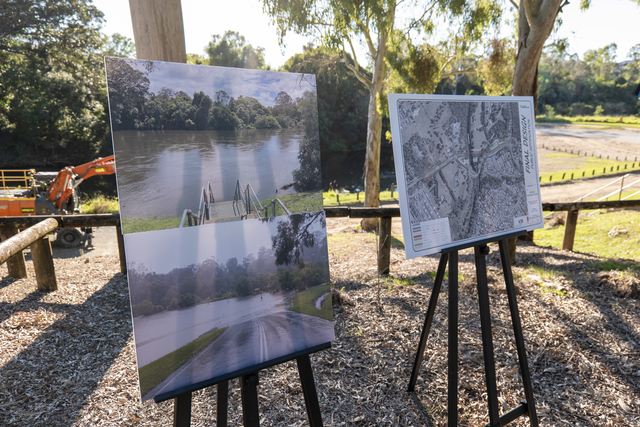“Asset management and the associated maintenance of an organisation’s assets is critical and beneficial,” Stuart Holley said.
“It minimises Council exposure to risk, increases service delivery, consistency of standards and customer satisfaction, and also highlights the need to be financially responsible with the allocation of Council’s scarce funding sources.”
From his 31 year career in Local Government both in Victoria and Queensland, Stuart Holley has experienced the broad range of functions and roles that a Local Government engineer undertakes.
In his current position, he is responsible for the areas of capital construction, which effectively project manages all capital projects across the functional area of Council, parks and natural environment, and infrastructure maintenance. He also oversees emergency management, which plays a very important part in preparing the community for the natural disasters that can impact the Queensland Coast.
“In normal circumstances, asset management challenges centre around the development of a comprehensive planning process to develop procedures and the necessary standards,” Stuart Holley said. “It also entails the creation of asset management systems and the ability to resource the collection of the necessary data and information to be inputted into these systems.
“Add to this the identification of risk with its overall assessment and control, followed by the creation of performance standards and reporting mechanisms and you start to get a feel for the complexity of the task of effectively managing the asset base.”
Stuart Holley said amalgamations have compounded these challenges for Queensland councils, as approaches, systems, methods and ability to manage the assets are totally different between councils.
“It is critical that the importance of asset management is reflected in the strategic thinking of all councils,” he said. “In the past, councils have not given due consideration to whole of life costing when considering the implications of major projects.
“This will have to change to ensure that the scarce resources that are available for the management of Local Government’s asset base is effectively utilised.”
In Queensland, through the Local Government Association on Queensland (LGAQ), councils have been provided with assistance through a comprehensive initiative called LG Asset.
This mentoring program allows councils to obtain the benefits of assistance from experienced asset management practitioners, while gaining experience, ownership and responsibility for the management of their asset base.
In addition, the Queensland Government, in partnership with LGAQ, has set up a Regional Roads Alliance to assist councils in the management of their road infrastructure asset base.
Through this initiative, councils have been assisted in acquiring approved asset management systems that will not only provide a mechanism for data collection and assessment, but in many cases will allow the entire range of assets to be captured in the one system.
Stuart Holley said Mackay Regional Council has adopted a shared system for the capture and management of its assets.
“Having been in operation for six years, the system has been used for the road network to undertake deterioration modelling,” he said. “It has also assisted in the development of road improvement programs and schedules. The system is also used for Council’s other assets, such as buildings, water and sewerage, bus shelters, pools, parks assets and so forth.”







